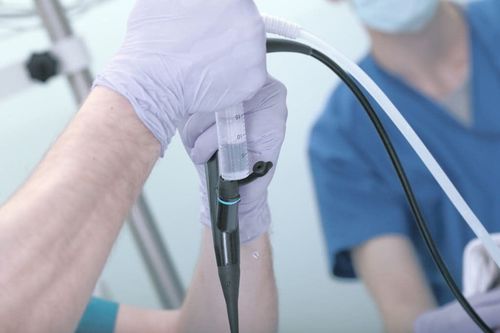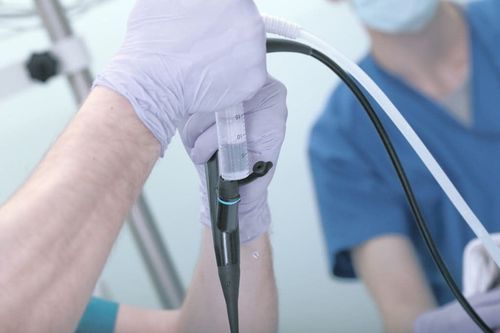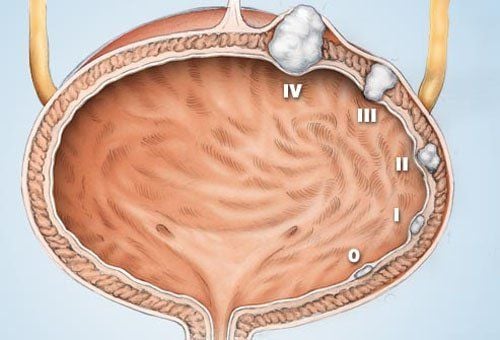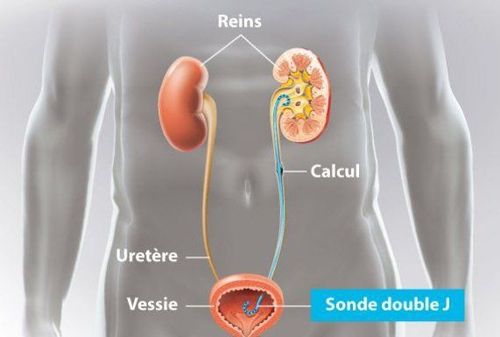This is an automatically translated article.
Cystoscopy is currently one of the most commonly used methods in the diagnosis and treatment of urinary tract diseases. This technique requires performing by skilled medical doctors for the most accurate diagnosis results.
1. What is a cystoscopy?
Cystoscopy is a method that allows the doctor to see inside the bladder and urethra area with the help of a specialized instrument (called a cystoscope).
The doctor can observe by looking directly into the endoscope or based on the images displayed on the computer screen. Not only that, the endoscope also has auxiliary manipulation channels that allow the doctor to insert some other small devices, such as taking tissue samples for biopsies.
Also, through cystoscopy, the doctor can perform procedures to remove small tissue growths or stones in the bladder. Thus, patients may not need to carry out complicated surgeries.
Depending on the condition and complexity of each pathology, the time to conduct this procedure is different. However, usually for mild diseases with simple treatment, it only takes 10-15 minutes.
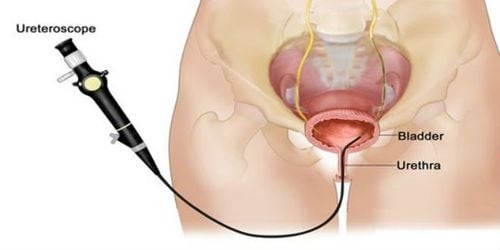
Nội soi bàng quang bằng ống mềm
2. Cystoscopy to diagnose urinary diseases
Cystoscopy can help detect the cause and diagnose most urinary tract diseases, specifically:
2.1 Lower urinary tract disorders Urinary disorders (pain when urinating, urinary incontinence) , dysuria), urinary tract infection, interstitial cystitis, bladder neck stenosis, overactive bladder, chronic pelvic pain,...
Methods of treatment and prevention of urinary tract disorders
2.2 Hematuria Microscopic hematuria (detected by urinalysis) or gross hematuria (visible to the naked eye).
2.3 Detection of Malignant Cysts Cystoscopy helps screen and detect malignancies in the bladder, urethra or upper urinary tract.
For cases where a tumor appears, the doctor can use cystoscopy to assess the degree of compression and invasion of the tumor, and at the same time conduct biopsy tissue samples. In addition, cystoscopy is also a necessary technique during the follow-up of patients after treatment for early-stage bladder tumors.
In addition to diagnosis, cystoscopy is also a technique widely used in the treatment of bladder diseases such as:
Removal of foreign bodies, stones in the bladder: When the bladder appears foreign bodies or stones, the doctor will perform an endoscopy to remove them, especially when the foreign body is stuck in a high and difficult position such as the ureter. Bladder tumor or polyp removal: Small tumors or polyps can be removed from the bladder by cystoscopy. Support for urinary catheterization: In cases where the patient needs a urinary catheter, the doctor will need the support of cystoscopy to be able to place the catheter into the patient's narrow ureter. Treatment of inflammation, prostate fibroids: With specialized endoscopic instruments, the doctor will gradually remove part of the prostate tissue to take it out of the body.

Polyp nhỏ có thể cắt bỏ bằng phương pháp nội soi
3. Cystoscopy procedure
Before performing cystoscopy, the patient should be careful not to eat or drink the night before. In certain cases, a doctor may prescribe antibiotics. In case patients are taking blood thinners such as: Ibuprofen or warfarin, aspirin, it is necessary to inform the doctor before undergoing cystoscopy. The patient lies on a flat bed with his back supine. After the area outside the urethra and surrounding skin is cleaned, the doctor will apply a gel to the urethral opening to help the endoscope pass more easily and reduce discomfort. Then, the doctor will proceed to insert the endoscope into the urethra, towards the bladder. The accessory channel of the laparoscope carries sterile water to fill the bladder, making it easier to see the bladder lining. The procedure usually takes 10 to 15 minutes. However, if the doctor combines cystoscopy with other procedures such as taking biopsies, this time may be longer.
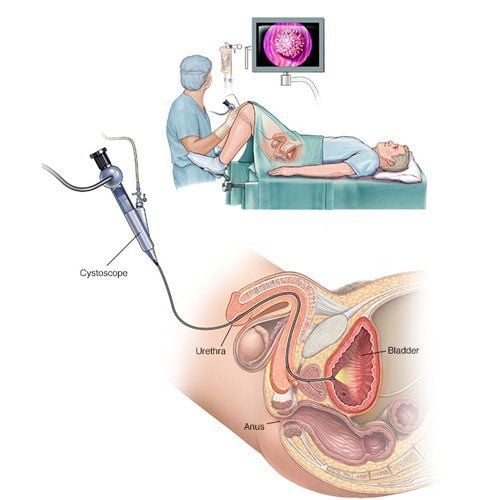
Quy trình nội soi bàng quang
4. Some possible side effects
Most patients do not experience any problems after cystoscopy. However, within 24 hours of the endoscopy, the patient may experience a burning sensation when urinating, frequent urination, or pink urine. In particular, a small number of cases of fever and pain when urinating may be due to a short-term urinary tract infection. After cystoscopy, if the patient has any strange symptoms such as pain, severe bleeding and prolonged bleeding, it is necessary to immediately go to medical facilities for examination and timely intervention. Cystoscopy is an effective method of diagnosing urinary tract diseases and is widely applied today. To ensure accurate and safe diagnosis, patients should follow the instructions of doctors and medical staff to avoid dangerous complications.
Any questions that need to be answered by a specialist doctor as well as customers wishing to be examined and treated at Vinmec International General Hospital, you can contact Vinmec Health System nationwide or register online HERE.
MORE:
Hard and flexible cystoscopy: What you need to know Common bladder diseases Possible side effects of cystoscopy




